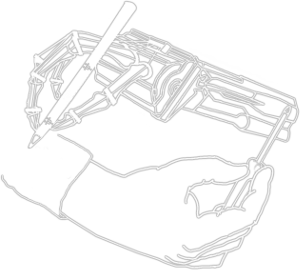| Title | Characterizing the Onset and Offset of Motor Imagery During Passive Arm Movements Induced by an Upper-Body Exoskeleton |
| Publication Type | Conference Paper |
| Year of Publication | 2023 |
| Authors | Mitra, K, Racz, FSamuel, Kumar, S, Deshpande, AD, Millán, JDel R |
| Conference Name | 2023 IEEE/RSJ International Conference on Intelligent Robots and Systems (IROS) |
| Date Published | Oct |
| Keywords | Decoding, Exoskeletons, Light emitting diodes, Manipulators, Neurorehabilitation, Performance evaluation, Robot sensing systems |
| Abstract | Two distinct technologies have gained attention lately due to their prospects for motor rehabilitation: robotics and brain-machine interfaces (BMIs). Harnessing their combined efforts is a largely uncharted and promising direction that has immense clinical potential. However, a significant challenge is whether motor intentions from the user can be accurately detected using non-invasive BMIs in the presence of instrumental noise and passive movements induced by the rehabilitation exoskeleton. As an alternative to the straight-forward continuous control approach, this study instead aims to characterize the onset and offset of motor imagery during passive arm movements induced by an upper-body exoskeleton to allow for the natural control (initiation and termination) of functional movements. Ten participants were recruited to perform kinesthetic motor imagery (MI) of the right arm while attached to the robot, simultaneously cued with LEDs indicating the initiation and termination of a goal-oriented reaching task. Using electroencephalogram signals, we built a decoder to detect the transition between i) rest and beginning MI and ii) maintaining and ending MI. Offline decoder evaluation achieved group average onset accuracy of 60.7% and 66.6% for offset accuracy, revealing that the start and stop of MI could be identified while attached to the robot. Furthermore, pseudo-online evaluation could replicate this performance, forecasting reliable online exoskeleton control in the future. Our approach showed that participants could produce quality and reliable sensorimotor rhythms regardless of noise or passive arm movements induced by wearing the exoskeleton, which opens new possibilities for BMI control of assistive devices. |
| DOI | 10.1109/IROS55552.2023.10342492 |

